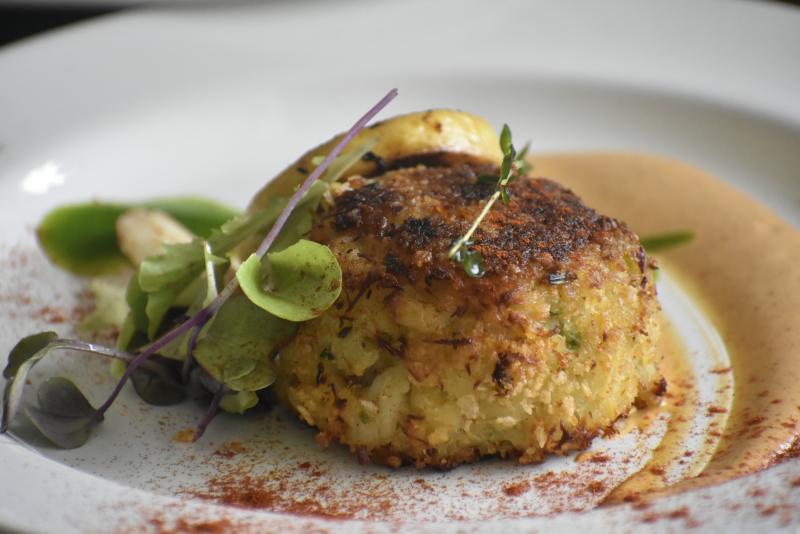Controversy rages over what, if anything, can be done about the polluted sediment behind the Conowingo, the last Susquehanna River dam before the bay. Salisbury Daily Times
The annual survey of blue crabs in the Chesapeake Bay showed a mixed bag, with the population of mature female crabs up while juvenile crab numbers declined to the lowest level since the survey began in 1990.
The Maryland Department of Natural Resources announced the results of the 2021 Blue Crab Winter Dredge Survey, a cooperative effort with the Virginia Institute of Marine Science, which annually estimates the number of blue crabs in the Chesapeake Bay.
The survey results showed that the number of spawning age mature female crabs increased from 141 million in 2020 to 158 million in 2021. This year’s survey estimate is above the long-term average of 126 million spawning age female crabs, DNR said in a release.
“Protecting spawning age females is a critical component to maintaining a healthy and sustainable blue crab population,” Maryland Department of Natural Resources Secretary Jeannie Haddaway-Riccio said.
“We are pleased to report that the cooperative management efforts of our Chesapeake Bay jurisdictions have continued to conserve female crabs within a healthy range.”
Scientists and managers use target and threshold abundance estimates to establish a healthy level of spawning age female population based on available historical information, DNR said in a release.
Recently scientists reevaluated the healthy range of spawning age female crabs through a stock assessment analysis and updated the target and threshold spawning age female abundance estimates. This year, the number of spawning age females estimated to be in the bay is well above the updated threshold of 72.5 million, but slightly below the updated target of 196 million.
The total abundance of blue crabs in the Chesapeake Bay in 2021 was 282 million crabs, a below-average total for the 32 years of survey results, which is largely attributed to low juvenile numbers.
Related: Annual blue crab survey finds Chesapeake population in good health
More: Lawmakers push to designate Chesapeake Bay as national recreation area
The number of juvenile crabs in 2021 was 86 million, which is the lowest recorded juvenile abundance since the start of the survey. Additionally, the results showed there were 39 million adult male crabs, below the long-term average of 77 million, according to the report.
Although the specific cause of this year’s low number of juvenile crabs cannot be identified, large variations in annual juvenile population are normal for blue crabs, the release said.
After spawning at the mouth of the Chesapeake Bay, young crabs develop in the ocean over the continental shelf and rely on winds and currents to be transported back into the bay, where they settle and grow. Annual juvenile abundance is largely driven by environmental factors.
“Blue crab fishery managers will need to keep a close eye on juvenile and male abundance over the summer through our monitoring efforts and to exercise caution moving forward into next year, as these crabs recruit to the fishery,” said Mike Luisi, director of Maryland DNR’s Monitoring and Assessment Division of Fishing and Boating Services.
The Chesapeake Bay Stock Assessment Committee will review the survey results and provide its scientific advice for management during its May meeting.
The 2020 Blue Crab Advisory Report had found that the overall Chesapeake Bay blue crab population was not being overfished and is not depleted, despite the population being estimated at nearly 200 million fewer members than last year.
The report, released Wednesday by the Chesapeake Bay Program and developed by the Chesapeake Bay Stock Assessment Committee, had recommended no major changes to the way blue crabs are managed in the Chesapeake.
The report had said blue crab population in the bay decreased from 594 million in 2019 to 405 million in 2020.
More: Migrant seafood workers in Maryland, Virginia have limited COVID protections
More: Lawmakers push to designate Chesapeake Bay as national recreation area
The Chesapeake Bay Foundation said the 2021 results highlight the need to continue to protect this vital resource.
“The increase in the number of adult female blue crabs in the bay is a good sign that fishery management focused on a robust female population is paying off,” said Chris Moore, the foundation’s senior regional ecosystem scientist, in a statement.
“The reduced abundance of juveniles and males could make crabs scarce later this summer into the fall for those who enjoy eating crabs, and indicates we should remain cautious in our approach to managing this valuable fishery.
Moore said that even though juvenile population estimates often fluctuate from year to year, “the extremely low estimate in this year’s survey highlights the need to continue to protect spawning females and to consider precautionary measures to protect these juveniles so that they can grow to maturity and spawn.”
“Reducing pollution to the bay is another key to a healthier crab population, as cleaner waterways and more underwater grasses will provide improved crab habitat, particularly for juveniles.”
Read or Share this story: https://ift.tt/3hItzpd
May 22, 2021 at 05:25PM
https://ift.tt/3hItzpd
Chesapeake Bay blue crab survey shows mixed results - Delmarva Now
https://ift.tt/2MkGRbk
Crab

No comments:
Post a Comment